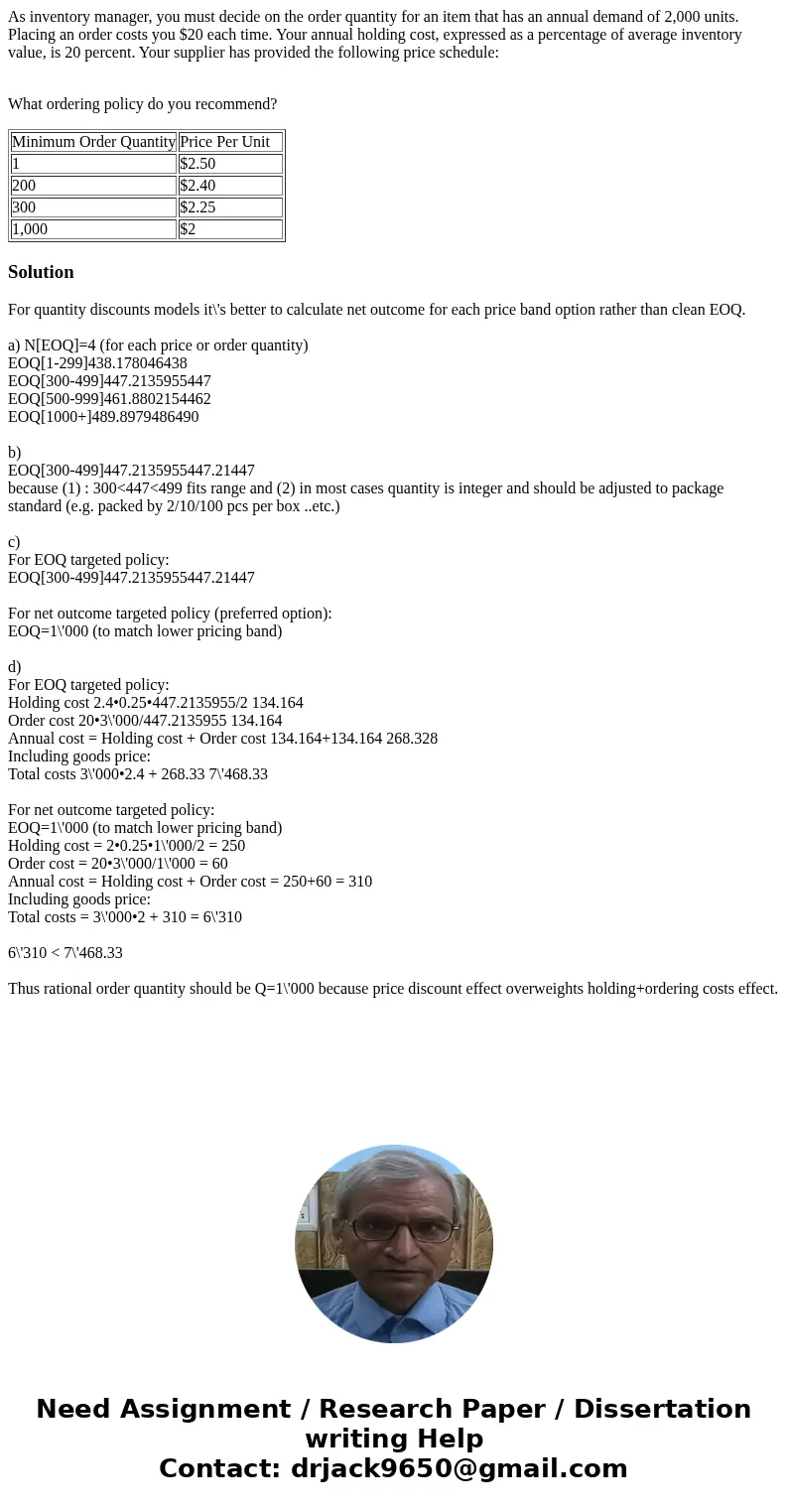As inventory manager you must decide on the order quantity f
As inventory manager, you must decide on the order quantity for an item that has an annual demand of 2,000 units. Placing an order costs you $20 each time. Your annual holding cost, expressed as a percentage of average inventory value, is 20 percent. Your supplier has provided the following price schedule:
What ordering policy do you recommend?
| Minimum Order Quantity | Price Per Unit |
| 1 | $2.50 |
| 200 | $2.40 |
| 300 | $2.25 |
| 1,000 | $2 |
Solution
For quantity discounts models it\'s better to calculate net outcome for each price band option rather than clean EOQ.
a) N[EOQ]=4 (for each price or order quantity)
EOQ[1-299]438.178046438
EOQ[300-499]447.2135955447
EOQ[500-999]461.8802154462
EOQ[1000+]489.8979486490
b)
EOQ[300-499]447.2135955447.21447
because (1) : 300<447<499 fits range and (2) in most cases quantity is integer and should be adjusted to package standard (e.g. packed by 2/10/100 pcs per box ..etc.)
c)
For EOQ targeted policy:
EOQ[300-499]447.2135955447.21447
For net outcome targeted policy (preferred option):
EOQ=1\'000 (to match lower pricing band)
d)
For EOQ targeted policy:
Holding cost 2.4•0.25•447.2135955/2 134.164
Order cost 20•3\'000/447.2135955 134.164
Annual cost = Holding cost + Order cost 134.164+134.164 268.328
Including goods price:
Total costs 3\'000•2.4 + 268.33 7\'468.33
For net outcome targeted policy:
EOQ=1\'000 (to match lower pricing band)
Holding cost = 2•0.25•1\'000/2 = 250
Order cost = 20•3\'000/1\'000 = 60
Annual cost = Holding cost + Order cost = 250+60 = 310
Including goods price:
Total costs = 3\'000•2 + 310 = 6\'310
6\'310 < 7\'468.33
Thus rational order quantity should be Q=1\'000 because price discount effect overweights holding+ordering costs effect.

 Homework Sourse
Homework Sourse